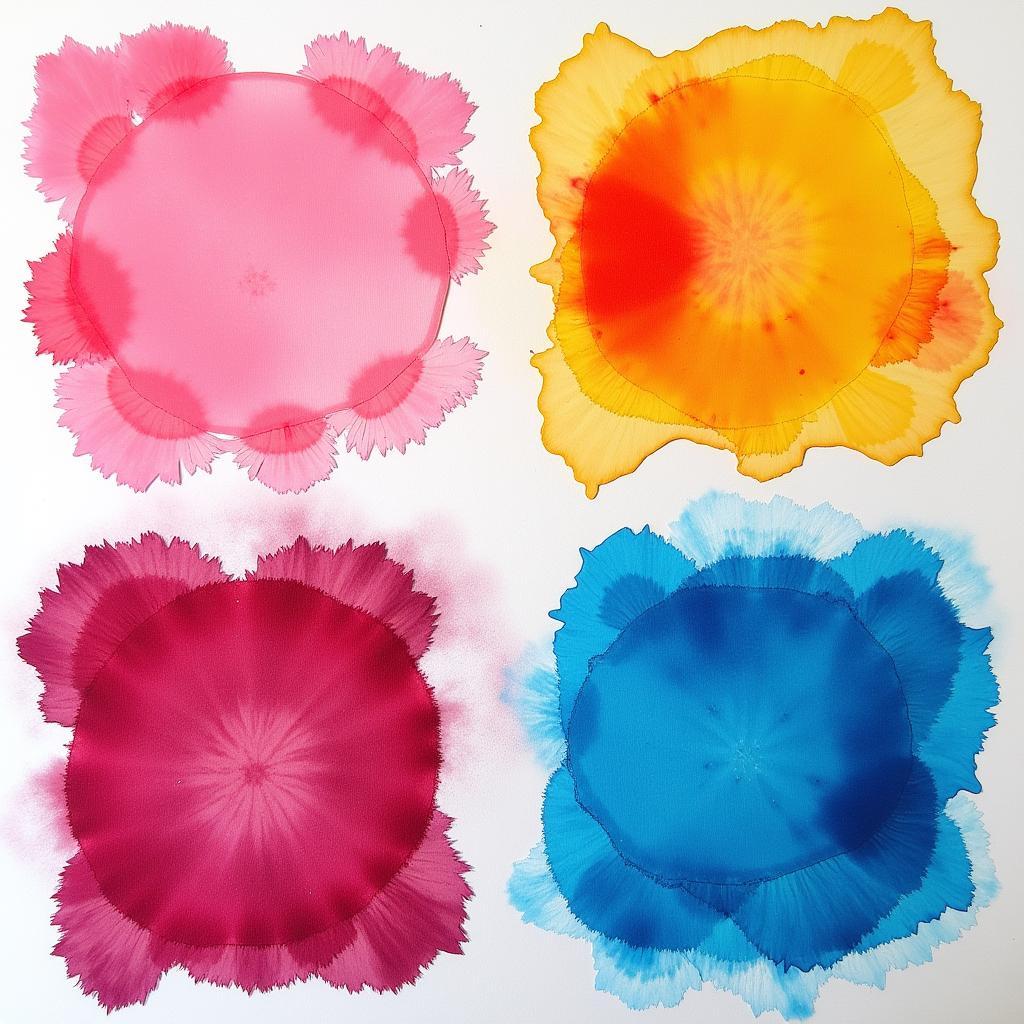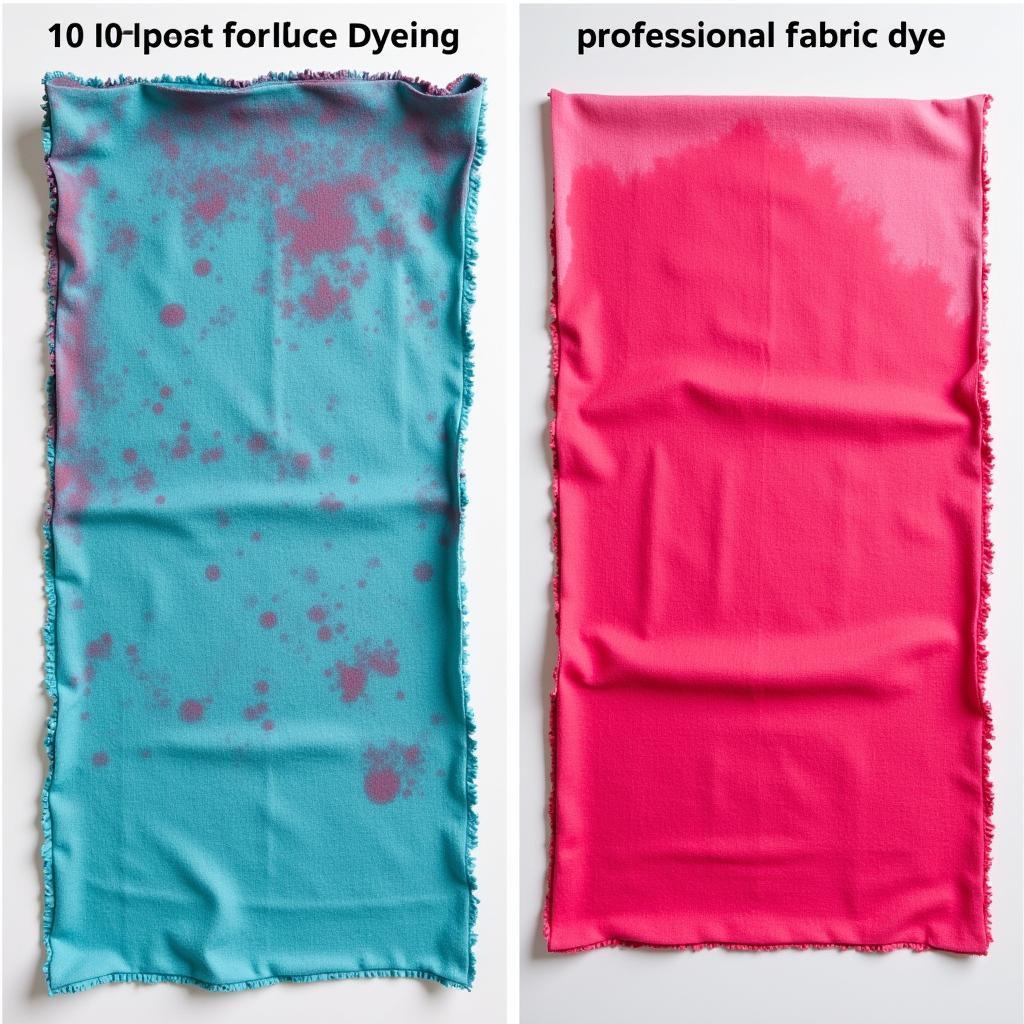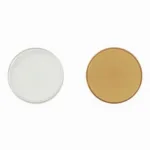Can I use food coloring to dye fabric? It’s a common question for DIY enthusiasts looking for a quick and inexpensive way to add a splash of color to their projects. While food coloring might seem like a convenient option, the results can be unpredictable and often disappointing. Let’s delve into the world of fabric dyeing with food coloring and explore its possibilities and limitations. can food coloring be used to dye fabric
Understanding Food Coloring as a Dye
Food coloring is designed for culinary purposes, primarily to enhance the visual appeal of food. It’s water-based and not formulated to adhere permanently to fibers like dedicated fabric dyes. This inherent characteristic significantly impacts its effectiveness and longevity as a fabric dye.
Can Food Coloring Dye Fabric Effectively?
The short answer is: yes, but with significant caveats. Food coloring can temporarily stain fabric, especially natural fibers like cotton, wool, and silk. However, these colors are often pale, uneven, and prone to fading quickly, especially after washing. Synthetics like polyester are much more resistant to absorbing the color.
How to Dye Fabric with Food Coloring (and its limitations)
If you’re determined to experiment with food coloring, here’s a basic approach:
- Prepare your fabric: Wash and thoroughly rinse the fabric to remove any sizing or finishes that might interfere with color absorption.
- Create your dye bath: Mix the food coloring with hot water in a container large enough to accommodate your fabric. The intensity of the color depends on the amount of food coloring used.
- Submerge the fabric: Completely immerse the fabric in the dye bath, ensuring it’s fully saturated.
- Soak and stir: Let the fabric soak for at least 30 minutes, stirring occasionally to ensure even color distribution. Longer soaking times can result in deeper (but still often pale) colors.
- Rinse and dry: Rinse the fabric in cold water until the water runs clear. Then, air dry the fabric away from direct sunlight.
## Achieving Specific Colors with Food Coloring
While achieving vibrant, long-lasting hues with food coloring is challenging, some colors are more readily achievable than others. For example, achieving a pastel shade like how to make robin’s egg blue with food coloring is more realistic than a deep, rich red. However, even pastel shades will fade.
 Different fabrics dyed with food coloring
Different fabrics dyed with food coloring
“Food coloring works best for small, temporary projects or crafts where colorfastness isn’t a major concern,” says renowned textile artist, Sarah Miller. “For anything intended for long-term use or frequent washing, invest in proper fabric dyes for reliable and lasting results.”
Food Coloring vs. Fabric Dye: A Comparison
Food coloring offers convenience and affordability, but its performance as a fabric dye is significantly inferior to dedicated fabric dyes. Fabric dyes are specifically formulated for textile use, providing vibrant, long-lasting color that can withstand washing and wear. The difference lies in the chemical composition and how they bind to the fabric fibers.
Removing Food Coloring Stains from Fabric
Despite its temporary nature, food coloring can still create stubborn stains, especially on clothing. Understanding does food coloring come off clothes is a common concern. Soaking the stained garment in cold water with a stain remover or a mixture of baking soda and vinegar can often help lift the stain. You might also wonder how to get food coloring off your skin.
“Remember, the quicker you address a food coloring stain, the easier it is to remove,” advises cleaning expert, Maria Gomez. “Don’t let it set, and avoid using hot water, as it can set the stain.”
 Comparison of food coloring and fabric dye on fabric
Comparison of food coloring and fabric dye on fabric
Can You Color Synthetic Hair with Food Coloring?
While we’ve been focusing on fabric, you might also be curious about can you color synthetic hair. The answer is generally no, as synthetic hair fibers react differently than natural fibers.
In conclusion, while you can use food coloring to dye fabric, the results are often temporary, pale, and prone to fading. For projects requiring vibrant, long-lasting colors, investing in proper fabric dyes is always the recommended approach. If you’re looking for a quick and easy way to add a touch of color to a temporary project, food coloring might suffice. However, manage your expectations and be prepared for the color to fade. Can I use food coloring to dye fabric? Yes, but proceed with caution and understand the limitations.
FAQ
- Will food coloring dye fabric permanently? No, food coloring stains are usually temporary.
- What types of fabric work best with food coloring? Natural fibers like cotton, silk, and wool absorb color better than synthetics.
- How do I make the food coloring dye darker? Use more food coloring in the dye bath.
- How can I prevent food coloring from fading? While complete prevention is difficult, rinsing in cold water and air drying can help.
- Are there any safety precautions when using food coloring to dye fabric? Always wear gloves to protect your skin and work in a well-ventilated area.
- What should I do if I spill food coloring on my clothes? Treat the stain immediately with cold water and a stain remover.
- Can I mix different food colorings to create new colors? Yes, you can experiment with mixing colors, but be aware the results can be unpredictable.
Need more help? Contact us!
Phone: 0373298888
Email: [email protected]
Address: 86 Cầu Giấy, Hà Nội.
Our customer service team is available 24/7.
